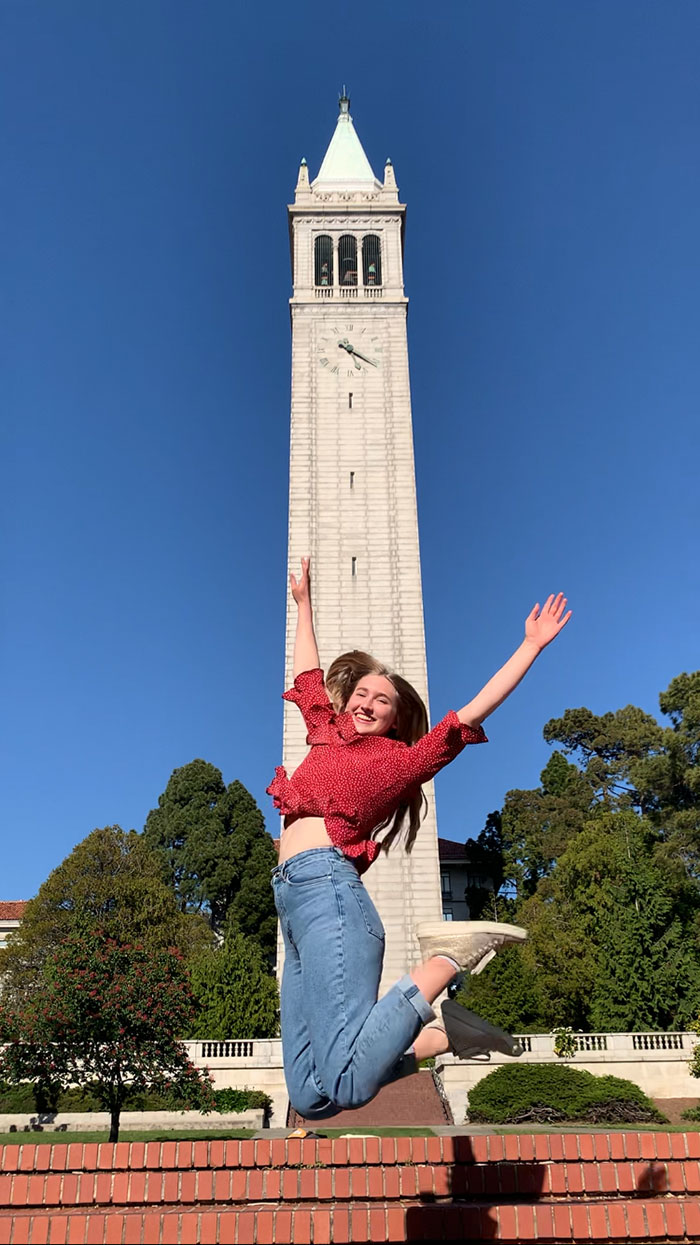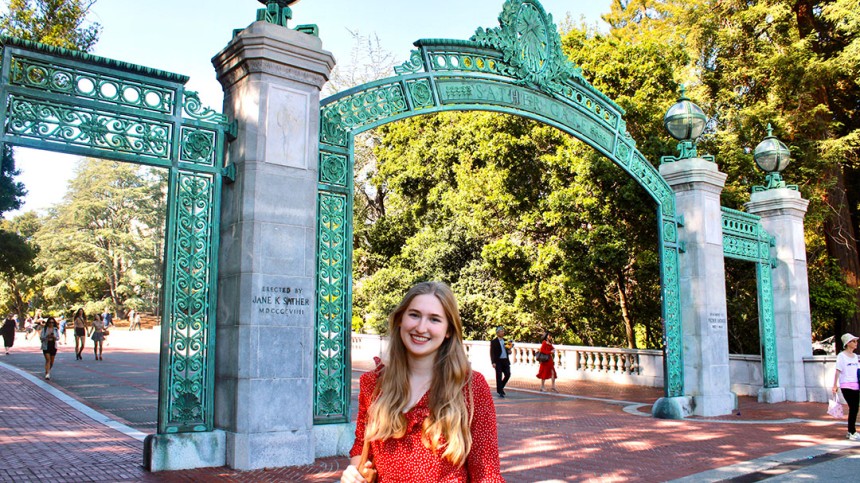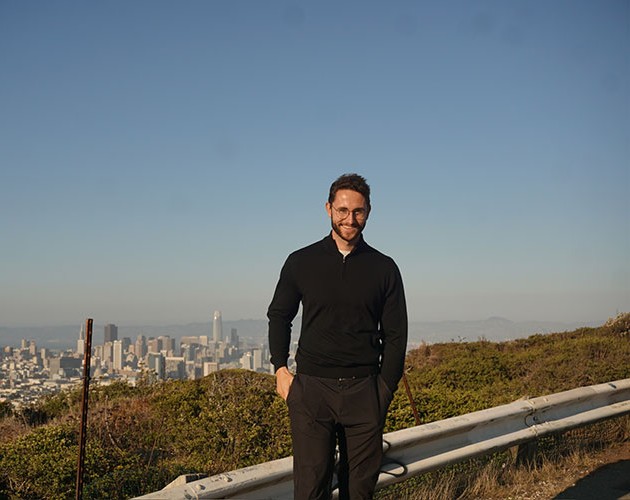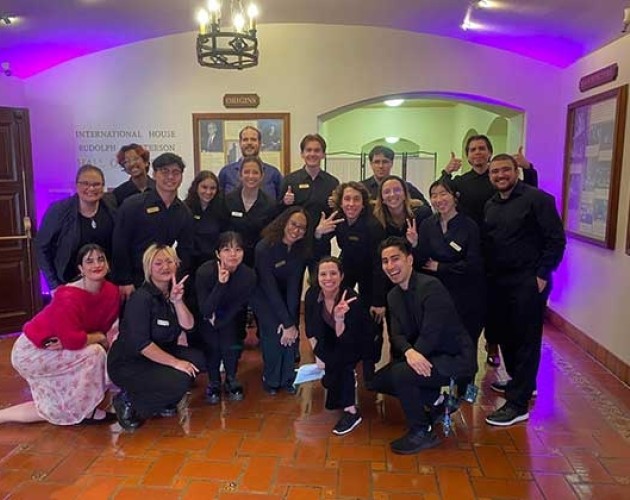
A little bit about me: After graduating from high school in Germany, I decided to remain in the country to pursue an undergraduate degree. I had always been fascinated by both computer science and biological and medical questions, so I was excited when I discovered that there was an undergraduate program in bioinformatics offered jointly by the Technical University of Munich and the Ludwig-Maximilians-University Munich. I have recently completed my third year of the program and I am planning to graduate next year.
Why I Chose BGA
Berkeley is a world-famous university and I wanted to experience what learning, teaching and student life are like at such a unique institution. Moreover, Berkeley’s location in the Bay Area—with San Francisco, the Silicon Valley and the Pacific Ocean in close proximity—was a really exciting prospect for me.
Another aspect of the Berkeley Global Access Program that appealed to me was the flexibility it offers in choosing classes. Unlike the structure of most undergraduate degrees in U.S. universities, my German degree has a rigidly defined curriculum, leaving little room for choice. While I appreciate the thorough education it provides in bioinformatics, I sometimes wish I had more flexibility in choosing classes to delve deeper into specific fields. BGA provided me with that opportunity.
Although I chose classes relevant to bioinformatics, I decided to specifically take courses that explore topics that are only covered superficially at my home university.
In total, I took five classes:
1. Introduction to Analysis Math 104
2. Career Development and Coaching Seminar
3. Berkeley Connect in Computational Biology CMPBIO 98BC
4. Neuroscience MCELLBI X108
5. Biological Psychology PSYCH X155
The only class I took as a direct requirement from my home university—and which I intend to get approved to count toward my degree—was Introduction to Analysis. My home university does not require me to find classes that exactly match those in my German curriculum. Instead, I could choose courses that best align with my current interests.
During a three-month research internship I completed last year in the lab of Professor Dr. Julijana Gjorgjieva, I discovered the fascinating field of computational neuroscience, which can be considered a subfield of bioinformatics. While most of the computational techniques used in this field seemed somehow familiar to me, I sometimes sensed a gap in my biological background, as neuroscience is only covered superficially at my home university.
Because I am considering pursuing a master’s or Ph.D. in Computational Neuroscience, I was really happy that the Global Access Program enabled me to take classes that gave me a better understanding of neuroscience.
I had a wonderful time in Sally Clapper’s Career Development and Coaching course. With the skills and knowledge I gained, I feel much more confident when it comes to networking and navigating my career.
Berkeley vs. German Classroom
For the more “traditional” classes like neuroscience, biological psychology and analysis, I would say they are similar compared to those at my home university in terms of content. The topics covered, as well as the amount of content, are comparable to what I am used to from my home institution.
However, one special aspect I came to appreciate at Berkeley was the variety of classes I could take. For instance, both the Career Development and Coaching Seminar and the Berkeley Connect Class were non-credit courses where soft skills and networking were just as highly valued as gaining factual knowledge. At my home university, it is rather unusual for such classes to be part of your degree.
I had a wonderful time in Sally Clapper’s Career Development and Coaching course. With the skills and knowledge I gained, I feel much more confident when it comes to networking and navigating my career. Sally is an incredibly kind instructor, and that aspect especially made the class very unique for me. I also benefited from the 1-on-1 coaching sessions in which I could discuss my personal career plans in more detail.
The teaching style and the level of support I received from professors were very different from what I am used to. For instance, in my math class, there were approximately 15 students in the lecture, which was a very unfamiliar but an extremely valuable experience for me because it allowed me to ask questions whenever something was unclear.
Additionally, the concept of office hours offered by the professor and graduate students was something I had not encountered before, but I quickly came to appreciate it during my time at Berkeley. Specifically for math, I was also a frequent visitor at the math drop-in tutoring at the Student Learning Center and can’t recommend it enough! (It’s also available for other subjects.)
I had the privilege of meeting the most amazing, caring professors who not only conveyed the course content, but also personally encouraged me to pursue my goals and take the next steps toward them.
In sum, the level of support I received from Berkeley to excel in my classes was something I had never experienced before, and I am very grateful that I had this wonderful opportunity.

Life Outside of the Classroom
During my time in Berkeley, I resided in I-House, where I met people from all around the world each day—an experience I wouldn’t want to miss. Furthermore, I was involved in a student club, Women in Weightlifting, which was a lot of fun and enabled me to meet even more Berkeley students.
What I really enjoyed about the unique location of Berkeley is that there are so many things one can do simply by taking BART to San Francisco. Some of the things I did were visits to former prison Alcatraz (ideally at sunset!), Golden Gate Park or one of the many beaches in and around San Francisco.
I also enjoyed taking several day trips around the Bay Area with friends. Among my favorites were visits to Silicon Valley, where we explored the campuses of Google, Meta and NASA. Another memorable trip led us to Marin County on the non-San Francisco side of the Golden Gate Bridge. This showed me that in the Bay Area, bustling city life and astonishing nature are only a few miles apart.
Additionally, we went on a weekend road trip to Yosemite, and I still remember the special feeling of standing next to one of the giant Sequoia trees. During spring break, I took an overnight bus to Los Angeles, where I enjoyed amazing days with fellow Berkeley visiting students. We also traveled to Las Vegas for a few days and explored the Grand Canyon.
If you’re coming to Berkeley, here are my top things to do:
I can recommend a visit to see the sea lions at Pier 39, as well as taking a drive to the Black Sands Beaches in Marin County. My favorite things to do, however, were those I did in Berkeley itself, together with the amazing people I met there. We enjoyed sipping coffee at Caffè Strada or Edmonds Café and having picnics while watching the sunset over the Golden Gate Bridge from the Berkeley Marina.
My absolute favorite was simply spending time on the Berkeley campus itself, whether it was enjoying the sun on Memorial Glade or relaxing on the terrace on the roof of the Engineering Center next to Evans Hall. For the latter, I had a tradition of always appreciating a few sunny moments there after my math lectures.
I had the privilege of meeting the most amazing, caring professors who not only conveyed the course content, but also personally encouraged me to pursue my goals and take the next steps toward them.
Interning After BGA
I was happy to be accepted into the Amgen Scholars Program, a summer research internship targeting undergraduate students in the biomedical sciences. The program is hosted at various institutions worldwide. Personally, I had the opportunity to participate in the program in Paris, where I explored this culturally rich city while working on my research project at the Institut Pasteur.
My project aims to contribute to the creation of a fully automated pipeline for the acquisition of behavioral data through which we hope to gain new insights into the complex interactions between neural circuits and behavior. In simple terms, we are interested in understanding which brain cells determine specific behaviors and how decisions are formed.
For me as a bioinformatics student, a typical day in the research lab includes a lot of software development and testing, as well as statistical data analyses, all of which require coding in different programming languages. In addition to daily work in the research lab, the Amgen Scholars Program also includes seminars and workshops that give an overview of various research questions in the biomedical field, as well as teaching practical skills for navigating a career in research.
The program concluded with a symposium at the University of Cambridge, where I presented my research project and again had the opportunity to network with peers and more advanced researchers in the biomedical field.
My Advice to You
Firstly, I would recommend joining at least one student club. It’s a great opportunity to meet regular Berkeley students.
Secondly, don’t hesitate to seek academic- and international-related support when needed. Utilize resources like office hours or the Student Learning Center if you ever feel like you’re falling behind academically, and rely on the fantastic assistance provided by the Berkeley Global Access team for anything related to your visiting-student experience.
And, most importantly, just enjoy your time and be ready to have the best semester of your life because, for me, it definitely was!




